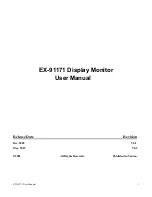
32
33
32
33
• The systolic pressure increases with
age.
• Women have a greater risk of increased
blood pressure after the menopause.
• Insufficient sleep, smoking, obesity,
alcohol and certain illnesses cause
blood pressure to rise.
• Bathing and toilet visits may cause
blood pressure to rise.
When is my blood pressure too high or
too low?
High blood pressure is also called
hypertension. Low blood pressure is also
called hypotension. The table below shows
general guidelines for when your blood
pressure is too high or too low. You should
always consult your doctor for exact
readings.
Why should I measure my blood
pressure?
Blood pressure rises naturally with age.
But high blood pressure can also be the
first sign of illness, being overweight or
of the arteries beginning to stiffen, which
increases the risk of blood clots, among
other things. It is therefore a good idea to
keep an eye on your blood pressure and
consult a doctor if it seems unusually high
or low. Write down your own readings, or
save them using the memory function, to
be able to show them to your doctor.
Important! Do not use to make medical
diagnoses. For use only as reference.
Consult a doctor if your blood pressure
readings seem abnormal. Always follow
the procedure specified in these user
instructions when taking readings.
PRIOR TO FIRST USE
Inserting the batteries
• Caution! To
save readings
in the memory,
change the
batteries
within one
minute. If
changing the
batteries takes
more than
one minute, the display will show all its
symbols for a moment, and will require
resetting (all saved readings will be
deleted).
• Change the batteries when the battery
symbol (g) is shown in the display (6).
• Remove battery cover by pressing the
lock tab and lift up.
• Insert four AAA batteries. Check
batteries are correctly polarised (see
diagram in battery compartment.)
• Replace the cover.
Fitting cuff and air hose
• Connect hose connector (8) to air hose
hole (5).
• Check connector is pushed in as far as
possible and is secure.
USING THE APPLIANCE
Preparing for a blood pressure reading
• Sit or lie down for 5-0 minutes before
the reading.
• Avoid eating, smoking, exercising,
bathing or drinking alcohol, coffee or
tea before taking the reading.
• Do not go to the toilet immediately
before the reading.
• Do not take a blood pressure reading if
you are excited, stressed or tense.
Range
Systolic Diastolic
Very high
blood pressure
(hypertension)
High normal
Very low blood
pressure
(hypotension)
Normal
> 40 mmHg > 90 mmHg
30-39 85-89
mmHg mmHg
9-29
5-84
mmHg mmHg
< 90 mmHg < 50 mmHg
















































